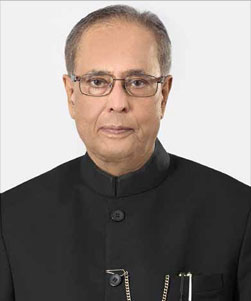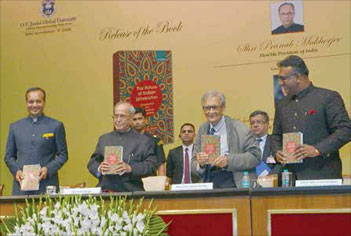
India has a long history of higher education. Some of the oldest institutions of higher learning such as Nalanda, Vikramshila (in India), and Taxila (now in Pakistan), etc. dating back to the 5th century BC, were located within the Indian subcontinent. These seats of higher learning attracted teachers, researchers and students from across the world. They produced mighty minds that shaped the politics, arts, culture, science and economics for over a millennium.
The higher education system we inherited was designed and established by the British colonial masters. Though designed for providing lower level civil servants, this system ironically opened the way for producing many highly educated professionals and even noted scholars, who made ground-breaking scientific discoveries and went on to become even Nobel laureates.
However, the needs of our contemporary times are very different from the aims and objectives of the colonial rulers that established the modern Indian higher education system. Our needs today are much more complex. Along with the post-independence emphasis on Nation-building through institution-building, we are now increasingly called upon to think about the role of Universities in the larger global context of an increasingly interconnected and interdependent world. The Universities of today are being called upon to compete globally for research-ranking to help build ‘World-Class Universities’.
Higher education systems around the world are going through a massive overhaul. What should the Universities of the Future look like? What should be the curriculum of the Universities of the future? What should be the pedagogy of the Universities of the future? What kind of graduates these Universities should produce? These are questions troubling many academics and world leaders.
Let our ‘Universities of the Future’ re-invent our rich past heritage of ‘Kautuhalshala’ (An assembly of inquisitive minds raising questions), hitherto silenced by the pedagogy of rote-memorising for test. Let our students raise important research questions and break new grounds in scientific discoveries, artistic creativity and philosophical ruminations
It is indeed my pleasure to receive the first copy of the book-The Future of Indian Universities: Comparative and International Perspectives edited by Professor Raj Kumar, founding Vice Chancellor of O P Jindal Global University and published by Oxford University Press, India. Today we have assembled here for the release of this book by a Nobel Laureate economist and philosopher, who was born in the land of the first futuristic global-minded University of modern India, i.e., Shantiniketan, the campus of Rabindranath Tagore's Viswa-Bharati University. Most of his early education also took place in Patha Bhavan School set up by Tagore in Shantinikentan, where many progressive pedagogic ideas were put into practice.

The curriculum and pedagogy in the school was not exam-oriented. Students enjoyed freedom to explore their inner creativity. Their natural curiosity to learn and explore their environment was encouraged. The school also stressed cultural diversity and embraced influences from the rest of the world. These ideals of education were also embedded in conceptualising Viswa-Bharati University, as is evident from the following quote of Gurudev Rabindra Nath Tagore, elucidated in his ‘Ideal of Education:-
“University is there to offer us opportunity for working together in a common pursuit of truth, sharing together our common intellectual heritage, to enable us to realise that artists in all parts of the world have created forms of beauty, scientists discovered secrets of the material universe, philosophers solved the problems of existence, saints made spiritual truths organic in their lives, not merely for some particular race to which they belonged, but for all mankind. When we understand this truth in a disinterested spirit, it teaches us to respect all the differences in man that are real, yet remain conscious of our oneness, and to know that perfection of unity is not in uniformity, but in harmony.”
- Tagore, (“The Ideal of Education", Visva-Bharati News, January 1934, p.5)
We would do well to take from reforms by great philosophers and visionaries, such as Tagore, who sought to revive the ancient Buddhist tradition of higher learning and research in a ‘common pursuit of truth’ for all mankind. As our ‘Universities of the Future’ gear up for global competition to find their place on the tables of institutional rankings, let us not forget the difference between ‘world-class’ and ‘world-minded’.
Let our ‘Universities of the Future’ re-invent our rich past heritage of ‘Kautuhalshala’ (An assembly of inquisitive minds raising questions), hitherto silenced by the pedagogy of rote-memorising for test. Let our students raise important research questions and break new grounds in scientific discoveries, artistic creativity and philosophical ruminations. Let our “Universities of the Future” help reproduce the next generation of great scientists, philosophers, artists, teachers, doctors, engineers and innovators. In the pursuit of these Kautuhalshalas, let us reinforce the glorious spirit of India where ‘shashtarth’, ‘tark’ and ‘vad vivaad’, – continuous dialectics, led to constant synthesis. Let us produce Argumentative and Pragmatic Indians rather than intolerant and dogmatic citizens.
(Speech by the former President of India, Pranab Mukherjee on the occasion of receiving the first copy of the book ‘the future of indian universities: comparative and international perspectives’. https://www.facebook. com/POI13/posts/1130905667009413)